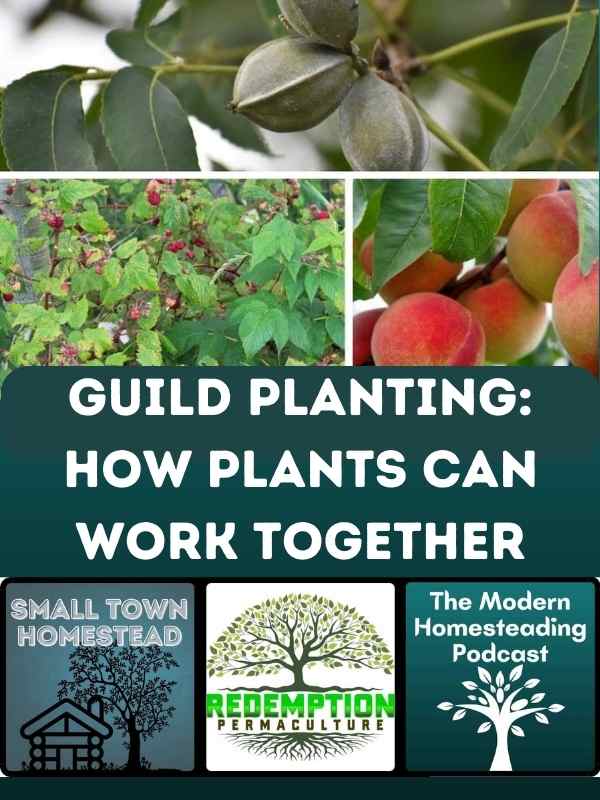Permaculture, a system of agricultural and social design centered on mimicking the patterns observed in natural ecosystems, has long embraced the concept of guild planting. At the heart of this method is the belief that plants, much like people, benefit from having the right companions. But what is a guild, and how can understanding them transform your garden? Let’s delve into the world of guild planting.

Understanding Guilds in Nature
Guilds, in ecology, refer to groups of species that exploit the same resources in similar ways, but not necessarily at the same time. In permaculture, a guild is a harmonious assembly of plants and animals that benefit one another through their interactions. These relationships help create a resilient, sustainable ecosystem by optimizing resources, reducing pests, and improving soil health.
A guild typically consists of a “central” plant, which serves as the main focus of the guild and provides the primary yield, such as fruit, nuts, or edible leaves. Other plants in the guild are chosen to provide specific functions that support the central plant and the overall health of the system. These functions may include nitrogen fixation, pest control, soil building, and more.
Order is found in things working beneficially together. It is not the forced condition of neatness, tidiness, and straightness all of which are, in design or energy terms, disordered. True order may lie in apparent confusion; it is the acid test of entropic order to test the system for yield. If it consumes energy beyond product, it is in disoder. If it produces energy to or beyond consumption, it is ordered.
Bill Mollison
Guilds are designed to be self-sustaining and require no, or at least minimal inputs, such as water and fertilizers, once established. By mimicking the structure and function of natural ecosystems, permaculture plant guilds help to create sustainable and regenerative food systems that are in harmony with the environment.
Key Benefits of Guild Planting
- Enhanced Productivity: When plants complement each other’s needs, they often thrive better than they would alone.
- Builds Resilient Ecosystems: Because they are designed the way nature naturally works, they are extremely resilient which makes them easy to maintain after they are established.
- Natural Pest Control: Certain plant combinations repel pests or attract their natural predators.
- Disease Resistance: Some plants can assist others in fighting off disease they may be prone to.
- Soil Improvement: Some plants, like legumes, fix nitrogen, benefiting neighboring plants. Other plants might assist in shading the soil, helping to retain moisture and benefit soil life.
- Resource Optimization: Plants with deep roots can bring up nutrients from deep down, which shallow-rooted plants can then utilize.
- Increased Biodiversity and Habitat Creation: Because of the diversity of plants and the design of a guild, it can contribute to and supports a variety of life.
Popular Permaculture Guilds
- The Three Sisters: This Native American guild consists of corn, beans, and squash. The corn provides a natural trellis for the beans to climb, the beans fix nitrogen in the soil, and the squash acts as a ground cover, suppressing weeds and conserving moisture.
- Fruit Tree Guild: An example of a perennial guild, this one revolves around an apple or other fruit tree. Companion plants like daffodils repel pests, comfrey brings up nutrients from deep in the soil, and clover fixes nitrogen.
- Pollinator Guild: This guild would be planted to support bees and other pollinator species. A tree like a Linden could be the overstory with support plants such as Rosa Rugosa, Dill, Parsley, Echinacea, Lovage, Mint, and Garlic.
Creating Your Own Guilds
- Start Small: If you’re new to guild planting, begin with a tried-and-true guild, like the Three Sisters.
- Observe and Interact: Note what’s working and what’s not. Permaculture is about adapting and learning from nature.
- Diversity is Key: Incorporate a variety of plants with different functions. Think about ground cover, nitrogen fixers, and pest repellers.
- Research: Learn about the needs, habits, and benefits of each plant you’re considering.
The Seven Layers Of A Food Forest Guild:
A food forest typically has seven layers of vegetation, each serving a different ecological function.
- Canopy (overstory) layer: The tallest layer, usually made up of large fruit and nut trees that thrive on full sun.
- Subcanopy (understory) layer: Smaller fruit and nut trees. These trees are more shade tolerant.
- Shrub layer: Can consist of any number of fruit and berry-producing, shade-tolerant shrubs.
- Herbaceous layer: This layer can be a variety of perennial and annual herbs and leaf-bearing plants that accommodate one another and the guild as a whole.
- Groundcover layer: These are horizontal spreading crops that cover the soil around the upper layer plants providing food and benefiting soil health.
- Root Crops layer: The Rhizosphere crop layer which is mostly made up of annuals and biennials.
- Vertical layer (Vines, Climbers): Shade tolerant climbers that can use the surrounding overstory and understory as trellises.
- Used Book in Good Condition
- Hardcover Book
- Jacke, Dave (Author)
Last update on 2024-07-26 / Affiliate links / Images from Amazon Product Advertising API
Challenges of Guild Planting
- Initial Complexity: It might be overwhelming initially, but with experience, creating guilds will become intuitive.
- Unforeseen Interactions: Nature can be unpredictable. What works in one ecosystem or climate might not in another.
- Maintenance: Even though guilds aim to create a balanced ecosystem, some level of maintenance, like pruning or weeding, is essential, especially in the beginning.
Conclusion
Guild planting embodies the permaculture principle of creating relationships where every element supports and is supported by another. By understanding and implementing these plant partnerships, we not only enhance the productivity and health of our gardens but also move a step closer to sustainable and harmonious coexistence with nature.




